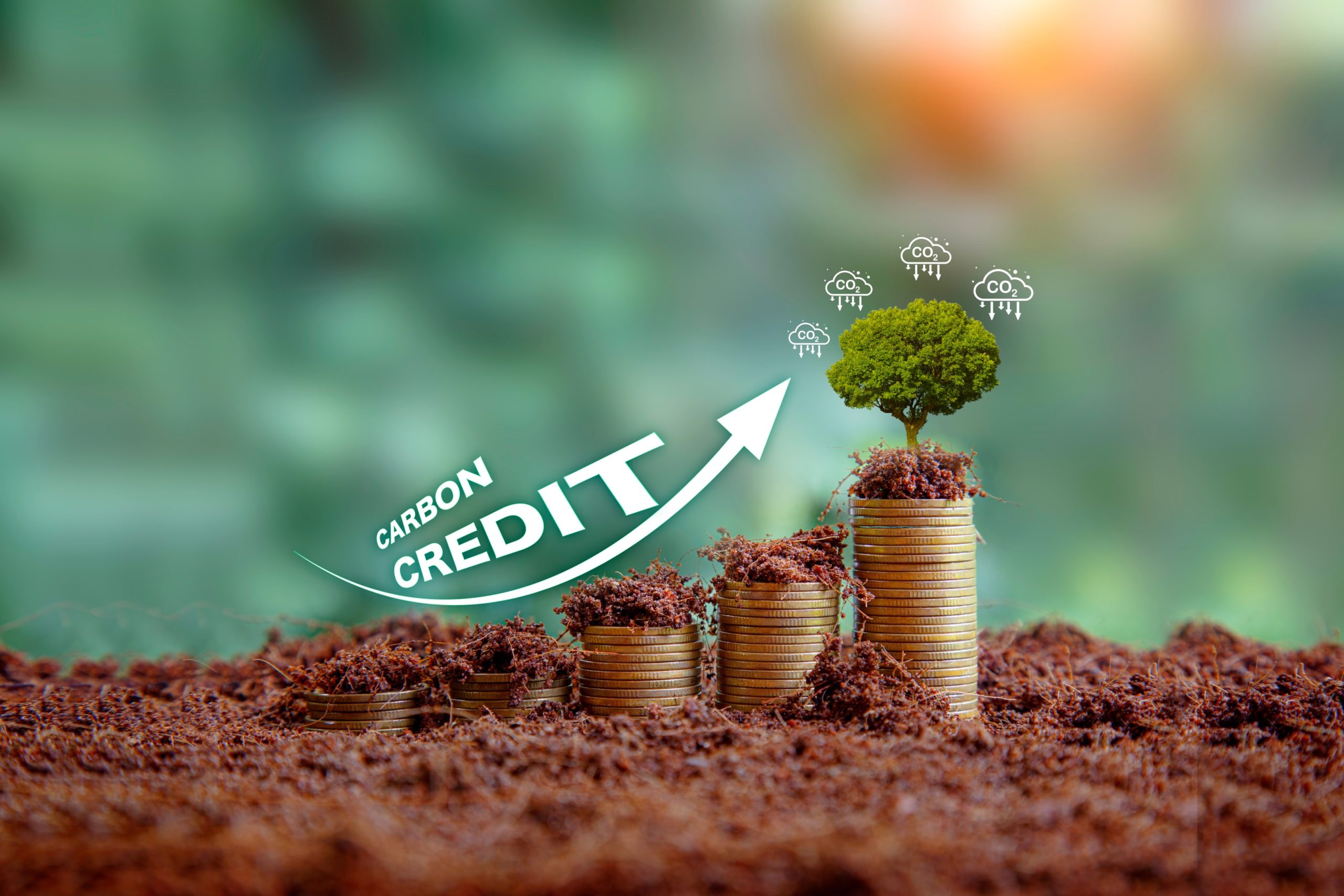What is Carbon Offsetting?
Definition of carbon offsetting
Carbon offsetting is when you buy carbon credit to compensate for a company’s or person’s carbon emissions. These credits represent a reduction or removal of greenhouse gases (GHGs) from the atmosphere, achieved through various carbon mitigation projects.
By financing these projects, businesses and individuals can balance out their own emissions, effectively reducing their carbon footprint. This mechanism allows entities to take responsibility for their unavoidable emissions by supporting environmental initiatives outside their direct value chain.
Importance of offsetting carbon emissions

Climate change poses a significant threat to the environment, economies, and communities worldwide. Businesses play a crucial role in mitigating climate change by reducing their carbon footprint and supporting climate action. The urgency to keep global warming within safe levels necessitates immediate and sustained efforts to lower emissions.
Carbon offsetting provides a practical and impactful way for businesses to contribute to global climate goals, ensuring a sustainable future for generations to come. By integrating carbon offsetting into their sustainability strategies, companies can demonstrate their commitment to environmental stewardship and corporate social responsibility.
Understanding Carbon Credits
What are carbon credits?

Carbon credits are the currency of the global carbon market, representing the reduction of one metric tonne of carbon dioxide or its equivalent in other greenhouse gases.
These credits are generated through projects that aim to reduce or avoid GHG emissions, such as renewable energy installations, reforestation, and energy efficiency improvements.
In compliance markets, carbon credits serve as permits to pollute, whereas in voluntary markets, they are known as carbon offsets. These offsets enable businesses and individuals to mitigate their carbon emissions by acquiring carbon credits and investing in projects that deliver measurable environmental benefits.
How do carbon credits work to reduce carbon footprint
Carbon credits are earned by projects that successfully capture, reduce, or avoid carbon emissions. Entities that emit GHGs can purchase these credits to offset their emissions, thereby achieving carbon neutrality.
For instance, a company that emits 1,000 tonnes of CO2 annually can buy 1,000 carbon credits from a renewable energy project developer that has reduced emissions by the same amount.
This transaction ensures that the company’s net carbon emissions are effectively neutralized, contributing to global efforts to combat climate change. Keywords: carbon, carbon offset credits,, carbon footprint, carbon neutrality, emissions reduction, climate change.
Calculating Your Carbon Footprint
Why calculate your carbon footprint?
Calculating your carbon footprint is the first step in taking meaningful climate action. It allows you to quantify your impact on the environment and identify areas where you can reduce emissions. Understanding your carbon footprint is essential for determining how many carbon credits you need to purchase to offset your emissions.
This process not only helps in achieving carbon neutrality but also enhances your awareness of sustainable practices and encourages continuous improvement in reducing your environmental impact.
Methods for calculating carbon footprint and emissions
Several tools and platforms offer ways to calculate your carbon footprint. The UN Carbon Offset Platform provides a user-friendly carbon footprint calculator for individuals to estimate their greenhouse gas emissions. This calculator involves a simple questionnaire covering various aspects of daily life, such as energy use, transportation, and waste generation.
By inputting this information, you can get an estimation of your annual carbon emissions and understand which activities contribute the most to your carbon footprint.
Businesses can use more comprehensive tools tailored to their specific operations, ensuring accurate and actionable data.
Benefits of Carbon Offsets
Supporting transparent climate action with certified carbon credits
Certified carbon credits offer businesses a way to support transparent and high-impact climate action worldwide. These credits are verified by independent third parties, ensuring that the emissions reductions are real, additional, and permanent.
By purchasing certified carbon credits, businesses and individuals can work towards achieving carbon neutrality, balancing out their carbon emissions through verified projects. These certified projects not only reduce global carbon emissions but also promote sustainable development and improve community well-being.
Strengthening your climate strategy with carbon offsets

Incorporating carbon offsets into your climate strategy can significantly enhance your sustainability efforts. You can choose from a portfolio of high-quality projects that align with your brand, business activities, or selected Sustainable Development Goals (SDGs).
For example, South Pole offers an unparalleled range of projects, from renewable energy to reforestation, each designed to deliver measurable environmental and social benefits.
By aligning your next purchase carbon offset purchases with your sustainability goals, you can maximize the impact of your climate strategy and demonstrate your commitment to global climate action.
Buying Carbon Credits
Options for buying carbon credits: direct, broker, retailer, or exchange
There are several avenues to buy carbon credits, including direct purchases from project developers, brokers, retailers, or carbon credit exchanges. Acquiring credits during the project development and registration stage can be advantageous for buyers, as it allows them to secure credits at potentially lower prices.
Each option has its pros and cons regarding price, terms, and delivery risk. For instance, brokers can offer convenience and a wide selection of projects, while direct purchases may provide more control over the specific projects you support.
Tips for buying carbon credits to offset your carbon footprint
Understanding how carbon credits work and their value is crucial for making informed purchases. When buying carbon credits, ensure that they are certified by reputable standards such as the Verified Carbon Standard or the Gold Standard.
Purchasing through brokers can offer convenience, especially for large purchases, though it’s important to be aware of potential transparency issues.
Various products and subscription plans are available to make carbon offset options affordable and effective in reducing your environmental impact. By buy carbon offset credits supporting verified projects, you contribute to meaningful emissions reductions and global climate goals.
Carbon Offset Projects

Types of projects supported by carbon credits
Carbon credits fund a diverse range of projects aimed at reducing greenhouse gas emissions and promoting sustainability. These projects include renewable energy installations, such as wind and solar power, which displace fossil fuel-based energy generation.
Forestry projects focus on reforestation, afforestation, and forest conservation, which sequester carbon and enhance biodiversity. Other projects involve methane capture from landfills and industrial emission reductions, which prevent potent greenhouse gases from reaching the atmosphere.
Examples of carbon offset projects reducing carbon emissions
Successful carbon offset projects demonstrate the tangible benefits of emissions reduction initiatives. For instance, the Akinci Hydroelectric Power Plant in Turkey generates renewable electricity, displacing fossil fuel-based power and reducing greenhouse gas emissions.
Similarly, the Ghani Solar Renewable Power Project in India constructs and operates a solar power plant, contributing to clean energy generation and reducing reliance on coal.
These examples highlight the diverse approaches to carbon offsetting and the significant impact these projects can have on reducing global emissions.
Verifying and Assuring Carbon Credits
Importance of verification and assurance for credible carbon credits
Ensuring the credibility of carbon credits is paramount for effective climate action. 100% of carbon offsets should be certified by top independent third-party verifiers, such as the Verified Carbon Standard or the Gold Standard.
These verifiers ensure that projects meet rigorous criteria for emissions reductions and contribute to sustainable development. Verification processes include detailed assessments of project methodologies, monitoring data, and periodic audits new project itself to confirm ongoing compliance with certification standards.
Rigorous assurance processes for certified carbon credits
Certified carbon credits undergo stringent assurance processes to guarantee their validity and impact. This includes the Green-e Climate Certification, the industry’s highest level of third-party assurance. Through these rigorous processes, carbon offset purchases are verified, ensuring they deliver genuine emissions reductions and contribute positively to global climate goals.
By choosing certified carbon credits, businesses and individuals can be confident that their investments are making a real difference in the fight against climate change.
Making a Positive Impact
How buying carbon credits contributes to a sustainable future
Buying carbon credits helps reduce global carbon emissions and promotes sustainable development. By investing in verified projects that reduce or remove greenhouse gases from the atmosphere, businesses and individuals support climate action and work towards a sustainable future.
This approach not only offsets current emissions but also drives innovation and progress in green technologies and sustainable practices.
The role of carbon credits in reducing global carbon emissions
Carbon credits play a crucial role in reducing global carbon emissions and mitigating climate change. They provide a mechanism for businesses and individuals to offset their carbon footprint and achieve carbon neutrality.
By supporting carbon offset projects, entities can balance their emissions and contribute to broader efforts to limit global warming.
This collaborative approach is essential for addressing the urgent challenge of climate change and ensuring a sustainable and prosperous future for the planet and all.
